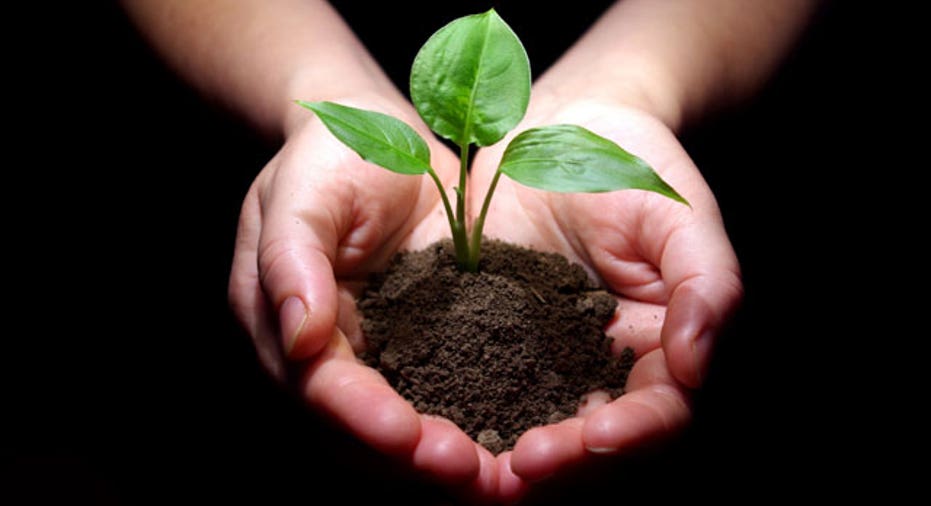10 Ways Going Green Saves You Green

Going green is a worthy goal, but sometimes to eco-friendly option costs a serious chunk of change.
Not everyone can afford to ditch their car for a new Prius, buy an organic cotton mattress, or eat only locally grown organic food. The good news is that there are many instances where the green option also is a money-saving option, which means you're simultaneously saving the planet and boosting your high-interest savings account. Not much to dislike about that deal!
As reported in the Wall Street Journal, here are 10 ways to save money by being eco-friendly:
1. Plug the energy leaks in your house. According to the Department of Energy, more than a fifth of U.S. energy consumption is in our homes. While it's understandable that you'd want to heat and cool your home, the problem is that much of that energy use is wasted because of cracks and gaps that let the hot or cool air escape. Insulate your home and seal all air leaks to save energy and lower your monthly bills.
2. Don't cool (or heat) an empty home. Programmable thermostats will allow you to program the temperature of your home based on when your family leaves and returns home each day. After all, why pay for a cool home in the middle of summer if you're at work all day? Programmable thermostats start paying for themselves quickly since they can cut your bill right away. Another option is to reconsider your comfort level, since changing the temperature by just one degree can save money on your energy bill.
3. Idea! Swap your light bulbs. According to the Department of Energy, the average household dedicates 11% of its energy budget to lighting, and new lighting technologies can reduce energy use by 50 to 75%. Energy-efficient compact fluorescent light bulbs (CFLs) can save you considerably more than the cost of the bulb in electricity costs over the bulb's lifetime.
4. Time to replace an appliance? Don't be short-sighted. Older appliances aren't as energy efficient as recent models, so when shopping, look for the EnergyStar seal from the Department of Energy, whose website states: "Appliances account for about 17% of your household's energy consumption, with refrigerators, clothes washers, and clothes dryers at the top of the consumption list." Consider both the purchase price and the energy efficiency, or else your "good deal" on a dryer could cost you a lot more over the next 10 to 15 years.
5. Slay vampire power. Did you know your appliances and electronics suck power from the grid even when they are on standby? Use a power strip to turn off everything at once, or purchase a new smart strip that senses when one device is not in use and another one is, adjusting power delivered to each.
6. Stay up-to-date on taxpayer incentives. Check the Database of State Incentives for Renewables and Efficiency, or DSIRE, to learn about federal and state programs to help you pay for green improvements such as making insulation improvements and installing solar panels.
7. Ease off the scalding hot water. The Department of Energy reports that water heating is the third largest energy expense in your home, accounting for 12% of your utility bill. To lower your bill, use less hot water, turn down the thermostat on your water heater to 120 degrees, insulate the heater and pipes, or buy a more efficient model.
8. Ditch the gas guzzler. You might not be able to afford a brand new hybrid, but that doesn't mean you can't drive a more fuel efficient car. According to the Wall Street Journal, new models start as low as $16,000. A great time to look for a fuel-efficient car is when gas prices aren't sky-high. Less demand means a better deal for the buyer. Save even more by making a deal on last year's model.
9. Get an audit that saves money. The word audit can sound about as fun as a root canal, but for a few hundred dollars, a home energy audit can cut your energy bills by up to 40%. Auditors use scanners and computer models to show you how and where energy is being wasted and also can make suggestions about ways your heating and water systems can be further improved.
10. Be a digital bookworm. According to the Wall Street Journal, "A device like the Kindle has about the same impact on the environment as 23 books…so if you're going to use it to read more than that, you're helping the environment." E-books also cost less than traditional paperbacks, which means avid readers will quickly break even on the cost of the device.
Wondering where you'll stash all of the money you've saved while being so eco-friendly? Consider using it to build your emergency fund, save for retirement, or just tuck it away in a high interest savings account. Maybe you can save up for more green home improvements that will save even more money!
The original article can be found at SavingsAccounts.com:"10 ways going green saves you green"



















